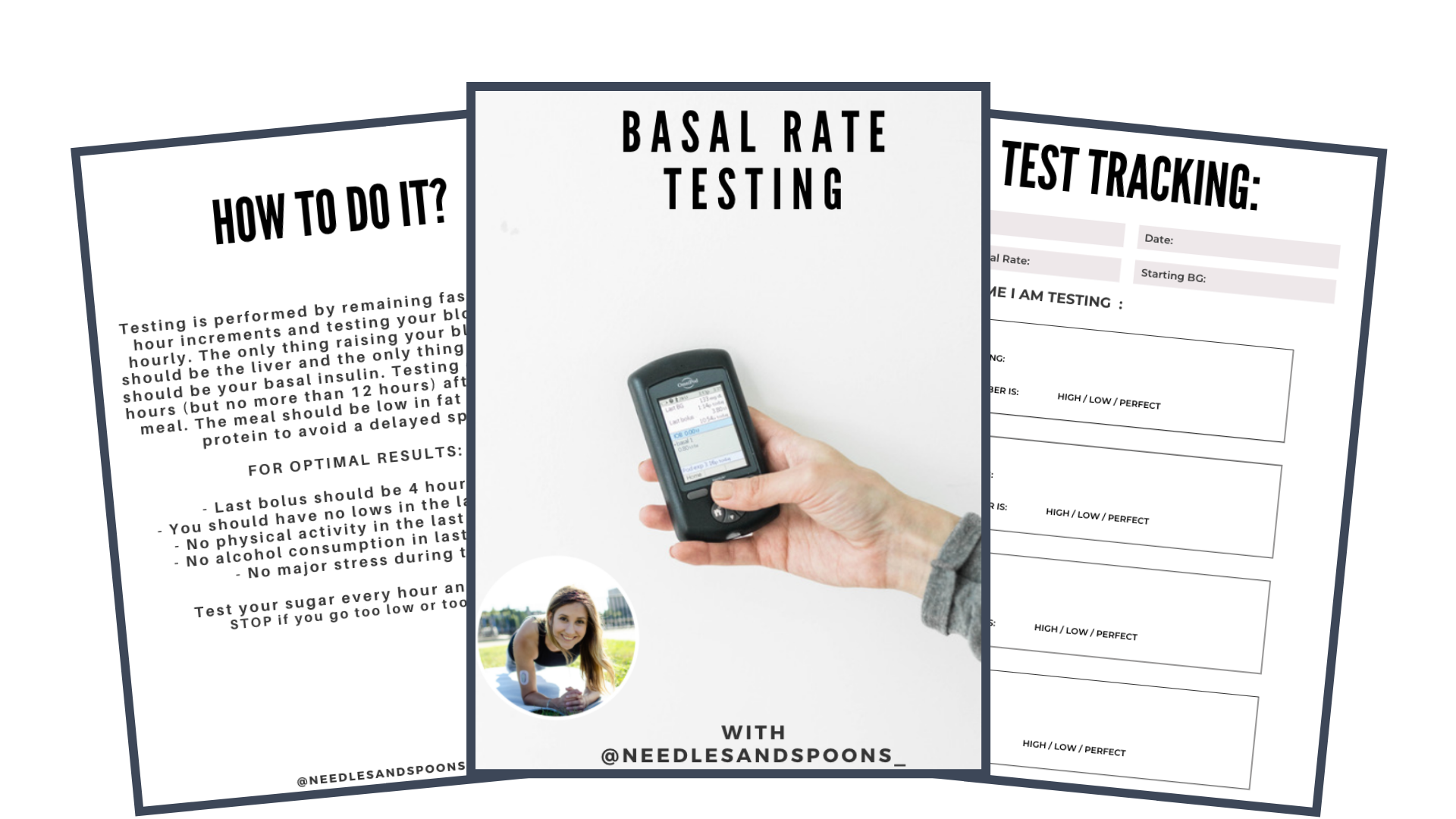RECENT POST
-
April 2021
-

CATEGORY
-
Diabetes Tips
-
Exercise Strategy
-
Mindset
-
Personal Stories
SUBSCRIBE

Diabetes Tips
3 Reasons You Should Do a Basal Rate Test
28 May 2020
Ah basal rate tests…. Most people I talk to about this either have never heard of it or run from it like the plague.
Before we get into running the test itself, let’s backtrack a bit.
What are basal rates?
Basal rates are the amounts of background insulin to offset the livers natural production of glucose. If you’re on injections, this is the role of your long acting insulin. If you’re on a pump, you have basal insulin being delivered every hour or so.
Why is a basal rate test important?
These tests are important to assure that we’re getting the right amount of background insulin so we’re not dealing with unnecessary highs or lows throughout the day or at night.
Chances are, when you were diagnosed you were given a standard amount of long acting insulin to take, and that likely transitioned to your pump as one steady basal rate.
But the thing is, our bodies naturally need different amounts of background insulin during different times of the day depending on hormones, stress, activity.. the list goes on! That’s why it’s so important to run a basal rate test to make these adjustments.
NOTE: Always consult your endocrinologist or health care provider before running this test and get their feedback first. The data you gain from the basal rate test should be brought to them for any adjustments in your insulin regimen.
Okay, so now for the test itself!
How do you perform a basal rate test?
A basal rate test is performed by fasting for a certain time frame – usually about 4-6 hours. During this time, you check your blood sugar frequently for any changes (specifically spikes or drops).
Now, there are some tricky parts to this, because the results are most accurate when you have no insulin on board and no post-meal spikes. In my experience, testing at least four hours after your last meal should give you the green light as long as it wasn’t too packed with protein or fats.
The results are also most optimal when other variables are eliminated such as: exercise, lows within the past 6 hours, boluses in the last 4 hours, alcohol in the last 12 hours or external stress.
Now do you see why it can be a pain to run these tests?
Like I mentioned, your doctor may have other specifications to running this test, so always consult them before starting.
Some other tips that may be helpful:
If you should have a high or low during the test, stop.
This is a great time to utilize your CGM to spot trends. If you do finger pricks, test every hour and bring the data to your doctor.

Want a free basal rate testing PDF? Grab it here!
Share this post on:

